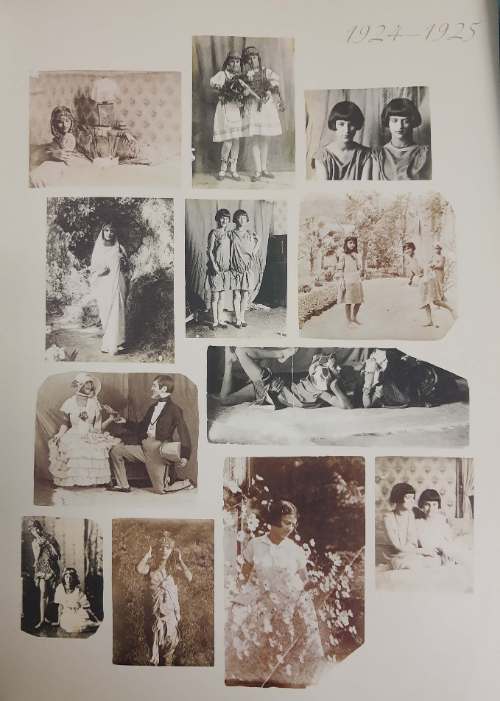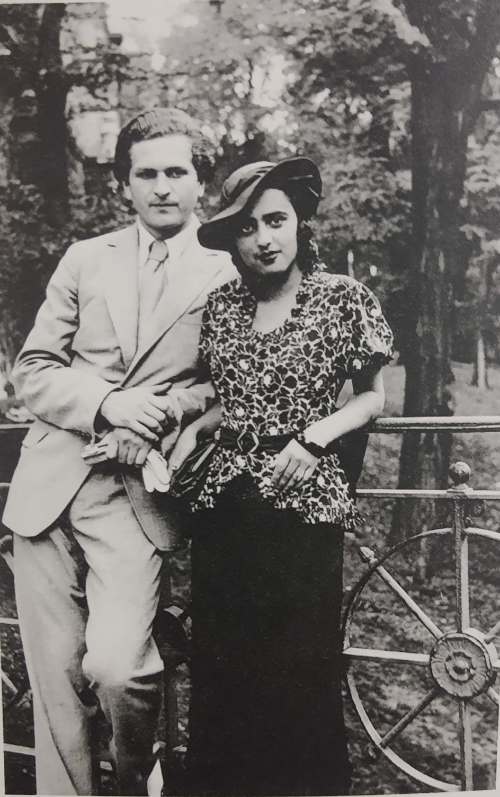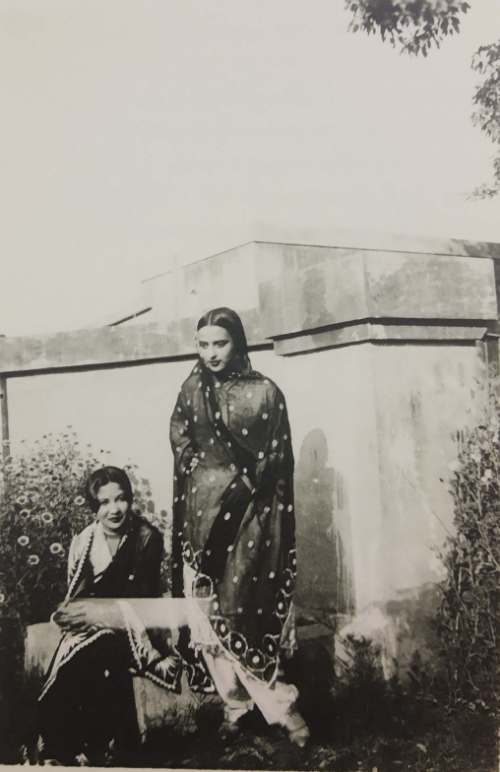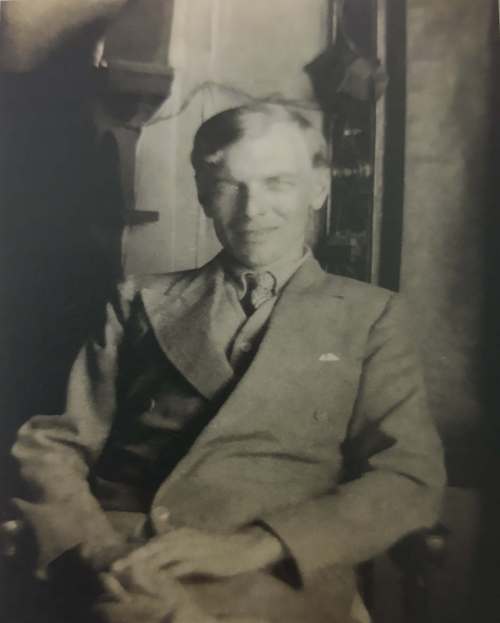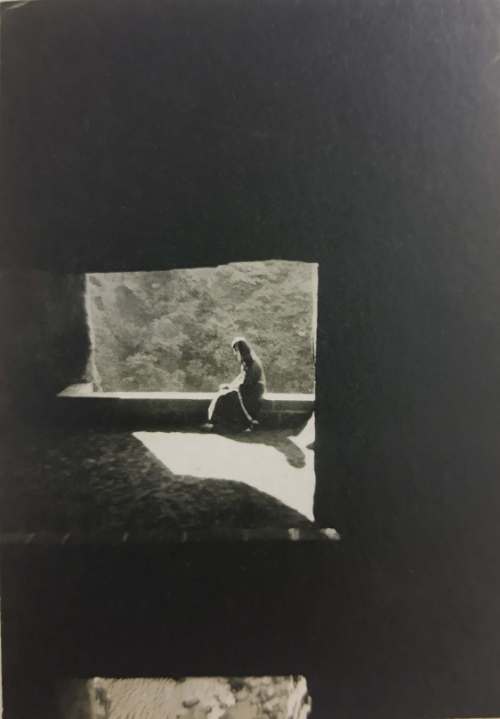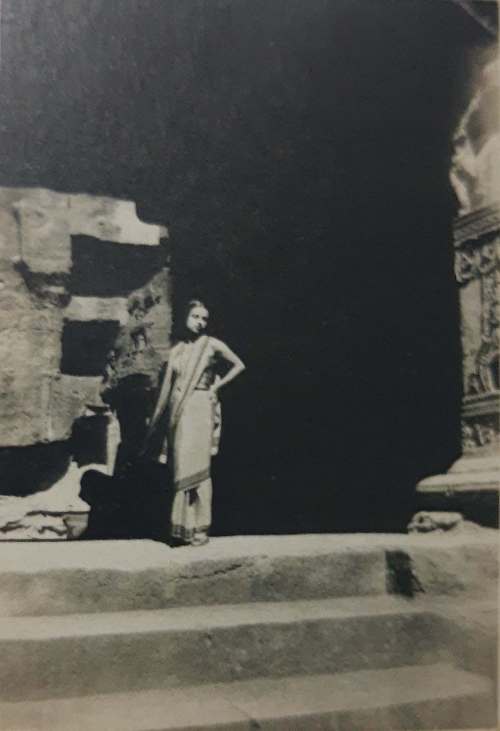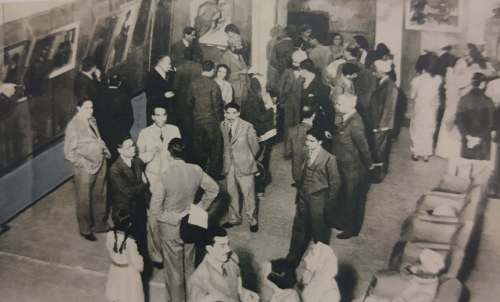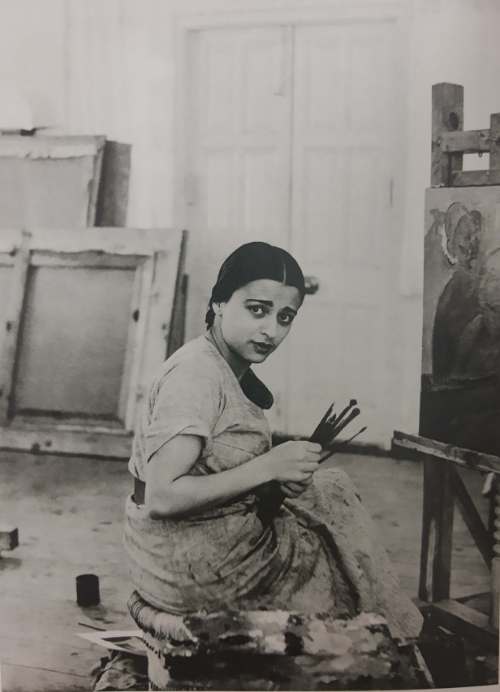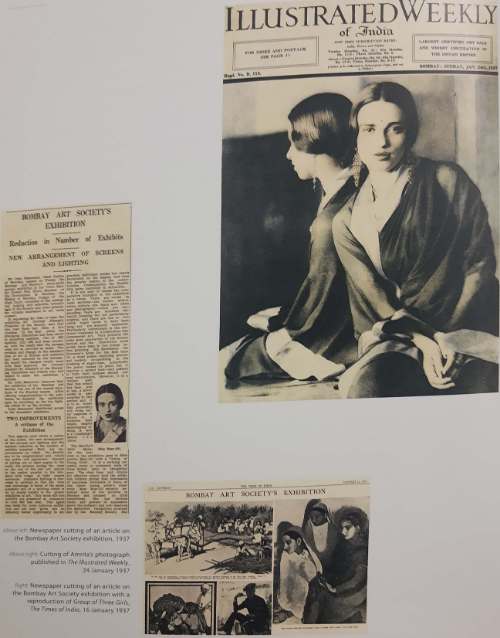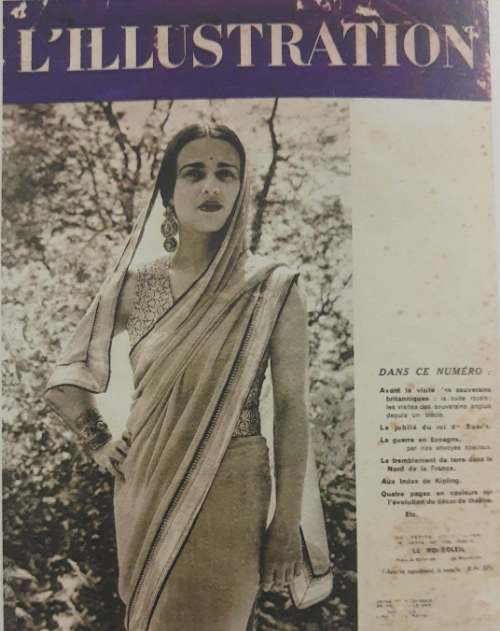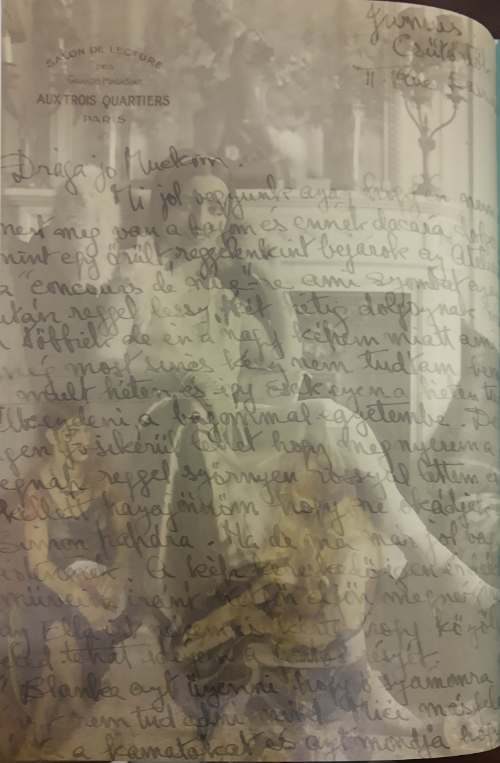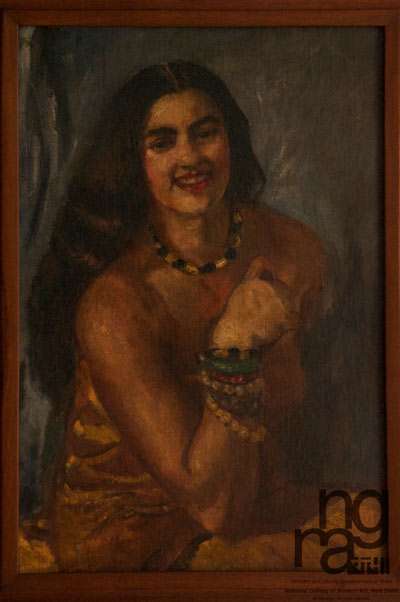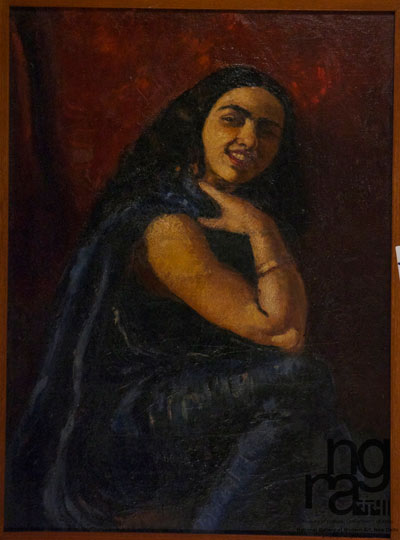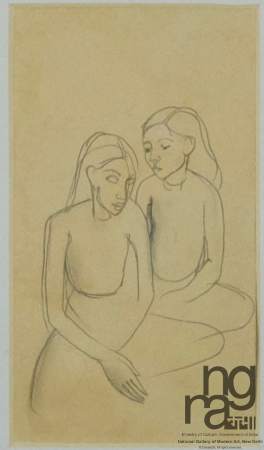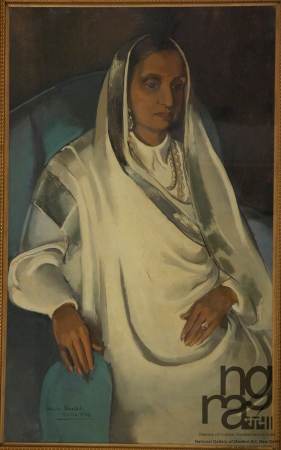Back Virtual Tour | An Unfinished Journey | Amrita Sher-Gil
×
Scroll right to show more
-
January 1912
-
December 1912
-
30 January 1913
-
28 Mar 1914
-
September 1916
-
1919
-
January 1921
-
April 1921
-
1923
-
January 1924
-
June 1924
-
1926
-
February 1929
-
April 1929
-
October 1929
-
May 1930
-
June 1930
-
June 1932
-
June 1933
-
July 1933
-
1933
-
February 1934
-
1934
-
December 1934
-
January 1935
-
May/June 1935
-
June 1935
-
September 1935
-
November 1935
-
December 1935
-
November 1936
-
December 1936
-
January 1937
-
February 1937
-
April - November 1937
-
October 1937
-
December 1937
-
February – March 1938
-
April 1938
-
June 1938
-
July 1938
-
August 1938 – May 1939
-
June 1939
-
July – November 1939
-
December 1939
-
October 1940
-
December 1940
-
1940-1941
-
August 1941
-
September 1941
-
5-6 December 1941
-
December 1941
Amrita Sher-Gil
30.01.1913 - 05.12.1941
Tribute to First Woman Modernist of India on her 110th Birth Anniversary
Artist's Profile
'Europe belongs to Picasso, Matisse and Braque and many others. India belongs only to me.'
Proud declaration by Amrita Sher-Gil in 1938, with characteristic boldness, way she wanted to see her as the first truly modern Indian painter.
A scion of Indian Sikh aristocracy, Umrao Singh was a nationalist, independent scholar with philosophical interests, and an eccentric, somewhat Tolstoyan figure in appearance. Celebrated artist Amrita Sher-Gil was the elder daughter of Umrao Singh and his Hungarian wife Marie Antoinette. Born in Hungary, Hungarian was her first language, was brought up on Magyar Folk tales. Bela Bertok had been the previous occupant of one of the apartments in the building the Sher-Gil family lived in.
Amrita's formal training in art began in 1929, when she was admitted to "Ecole Nationale des Beau Arts" (after a brief stint at the Grande Chaumiere) in Paris. Became proficient in French and the ways of bohemian Paris. Mentally agile - as she was sensually alert and avid, over the next four years she won many prizes, was elected as associate member of the Grand Salon and gained recognition as a talented figurative painter. Amrita had followed a disciplined life not to let the distractions of Paris impact her creativity in a massive way.
Amrita Sher-Gil was adept in a form of figurative painting that, for all its academic antecedents, was not unrelated to the various strands of realism. The European dimension in her- gave her the option to choose Paris as her workplace, which could have easily been Budapest. In December 1934 Amrita returned to India, to her family home at Shimla. She chose India to find herself as an artist who will evolve over the time, although her father thought that staying back in Europe would be better idea for her. Amrita's view was: 'I must avow that I was somewhat hurt by the reason you give for wishing us to stay on in Europe,' in a letter she wrote to her parents in September, 1934. 'I was rather sad to realize that you place the conservation of your good name above your affection for us'…
'I wish to return primarily in the interests of my artistic development. I now need new source of inspiration and here you will perceive Duci [Amrita's Hungarian diminutive for her father] how utterly mistaken you are when you speak of our lack of interest in India, it's culture, it's people, it's literature all of which interest me profoundly and which I wish to get acquainted with and I think I will find it in India. Our long stay at Europe has aided me to discover as it were, India. Modern art has led me to the comprehension and appreciation of Indian painting and sculpture. It seems paradoxical, but I know for certain that had we not come away to Europe I should perhaps never [Have] realized that a fresco from Ajanta or a small piece of sculpture in the Musee Guimet is worth more than the whole of the Renaissance!'
She, with an attitude and sentiment to keep other ideas away was distinct in the article published in 1936 entitled 'Evolution of My Art', where she clearly stated: 'Although I studied, I have never been taught painting in the actual sense of the word, because, I possess in my psychological make-up a peculiarity that resents any outside interference. I have always, in everything, wanted to find out things for myself,' However, Sher-Gil later recalled, an attitude that was certainly conducive to someone as allergic to instruction as she made herself out to be. Yet she did not escape the academic tenets that came with a Beau Arts education, as she herself acknowledged once she had returned to India.
She indeed threw herself into travelling and rediscovering classical Indian medieval art. She painted most of her best known works in the following six years- a period of prodigious creativity that was cut short due to fatal illness. Amrita died in Dec 1941, at the age of 28.
The artist extraordinaire in her short but experiential life had versatility and range of interests which further reveals her sensitivity towards aesthetic, social, emotional and psychological aspects. Her artistic eyes always searched and discovered relevance of modernism within Indian reality.
A persona like Amrita Sher-Gil is hard to decipher in it's appropriate context. While her legendary presence within the art sphere in India has remained alive for decades, though her identity, her works continue to be raised and discussed, yet they appear to be insufficient.
Her engagement with sexuality and Bohemian lifestyle can be interpreted as signature to her short but passionate existence.
With the gift of inquisitive and thoughtful, self-evaluating mind - it was full of provocative contradictions, as regularly found on her thematic and pictorial depictions, best evidences however, are the letters she wrote, which are not only thought provoking but also ruminative.
Amrita Sher-Gil did interpret the life of Indians, notably the common ignored Indians, through her brush, painted images of infinite submission and patience. Her unbiased school of style of painting, she successfully developed her own pictorial language, mixing Western and Eastern traditions, responding according to her observations related to varied cultural and sociological influences those were prevalent within her short but colorful life. In her words 'I'm an individualist, evolving a new technique, which, though not necessarily Indian in the traditional sense of the word, will yet be fundamentally Indian in spirit.'
Early career of Amrita was a usual beginning with oils, portraits and models from life in a largely academic style. Young Girls (1932) won her an Associated Membership of the Grand Salon, which was reflection of that period. Her younger sister posed for a number of paintings, among which Sleep (1933) was arguably the most seductive one. Few months prior to painting sleeping figures, Amrita visited Gallery of London, where she had encountered the paintings of Paul Gauguin. Gauguin’s stylishly simplified yet symbolically charged Tahitian Nudes became a source of inspiration to her, which she later portrayed through Self Portrait as a Tahitian (1934).
Amrita Sher-Gil was never existed within the Surrealist orbit, just like she had never ventured around various forms of Geometric abstractions prevalent in the 1930s. Postimpressionist Gauguin had certainly impressed Amrita. Sher-Gil's time at the Ecole she spent to really evolve, which can be described as generic figurative style with a psychological twist, a synopsis of School of Paris categories: nudes, portraits, still lifes. She preferred to paint Models and subjects used to be from her inner circle, fellow students, friends, her sister and sometimes professional models too.
'Towards the end of 1933 I began to be haunted by an intense longing to return to India, feeling in some strange inexplicable way that there lay my destiny as a painter. We returned at the end of 1934. My professor had often said that, judging by the richness of my coloring, I was not really in my elements in the gray studios of the West, that my artistic personality would find it’s true atmosphere in the color and light of the East. He was right, but my impression was so different from the one I had expected, and so profound that it lasts to the day. It was the vision of a winter in India – desolate, yet strangely beautiful – of endless tracks of luminous yellow-gray land, of dark – bodied, sad – faced, incredibly thin men and women who move silently looking almost like silhouettes and over which an indefinable melancholy reigns. It was different from the India, voluptuous, colorful, sunny and superficial, the India so false to the tempting travel posters that I had expected to see,' that was her expressions.
The influence of early Indian sculpture, the earliest example of Indian art to which Amrita had been exposed, Frescos of Ajanta and Miniature painting had deep impact on her world of thinking. 'vital, vibrant, subtle unutterably lovely', she wrote in a letter after visiting Ajanta frescos.
Body's sentience, delicacy of sensuality undulating rhythms producing forms glimpsed in the flickering light. The plasticity of the figures, tenderness of bodies and their classical poise with tonal equilibrium were the salient features she would attempt to translate in her own artistic language.
The other remarkable point of Amrita's South Indian trip for the ‘sensualist of the eyes" as she described herself, was her Mattancheri Palace fresco influence, where she had visited to discover frescos of the seventeenth century. She had desired to be seduced, enthralled, transported by her discoveries- and not only art, the vivid south Indian landscapes played a huge roll. In a letter to her mother from Trivandrum she wrote: 'The journey from Madurai to here was beautiful. The soil was ochre red, on it's rich emerald green vegetation, coconut trees, banana trees, palm trees, small red thatched huts or red clay hovels… not a single European and no trace of European "civilization".' After returning to Shimla, she created the ‘south Indian trilogy’.
During her stay in Bombay, she did gather knowledge related to different Indian schools of art, like miniature painting, and that was her another eye opener after the frescos of Ajanta. It was to another facet of the Indian pictorial tradition that indeed excited her, leading to newer ideas and creations. The new path she delved was confirmed when change in scale or and choice of subjects were particularly visible. Less abstractionism, heavy influence of Pahari miniatures with condensed and color rich pictorial compositions were all around Amrita’s art world during this period.
Amrita Sher-Gil opted for less majestic but comfortable attitude to the subjects she had selected on Indian context. As she proclaimed: 'I want to achieve sonorous modulations of color and an unctuous texture,'.
Her interest in European painters was prominent instead of her enthusiasm for the Indian schools of art. Her passion for the Flemish master – Breughel the Elder was well known.
She was working on the painting before her untimely death in December 1941, and a clear indication was there that she was on the verge of a breakthrough in her language of painting which evolved over a period. Simplified forms, audaciously framed, distinct colorfulness were products of the view she had through her studio window in Lahore where she was settled during her last days.
A major exhibition was scheduled, but she died unexpectedly – the cause still remains obscure. And she was only twenty-eight. The painting remained unfinished as was her project: she was on the threshold of becoming a truly modern Indian artist.
Join the Conversation
×
Mentor
Mrs. Temsunaro Tripathi,
Director, NGMA
Research Material
Team JATAN, NGMA New Delhi
Concept, Design & Development
IT Section, NGMA
S S Paul, Information Systems Manager,
Aniruddha Mukherjee, Systems Analyst
Yogesh Vats, Systems Analyst
Content Management
IT Section, NGMA
Image Reference for JEEVANSMRITI
#Amrita Sher-Gil, a self-portrait in letters & writings, volume 1.
Introduced, annotated & edited by Vivan Sundaram. First published in India in 2010 by Tulika Books, New Delhi- 110049
Literary Reference
#PHOTOINK.
Published on the occasion of the exhibitions:
Amrita Sher-Gil - An Indian Artist Family of the Twentieth Century.
Haus Der Kunst, Munich.
And Tate Museum, London.
With an essay by Deepak Ananth.
Video reference
Documentary Film by B.D.Garga
produced by
National Film Development Corporation
-
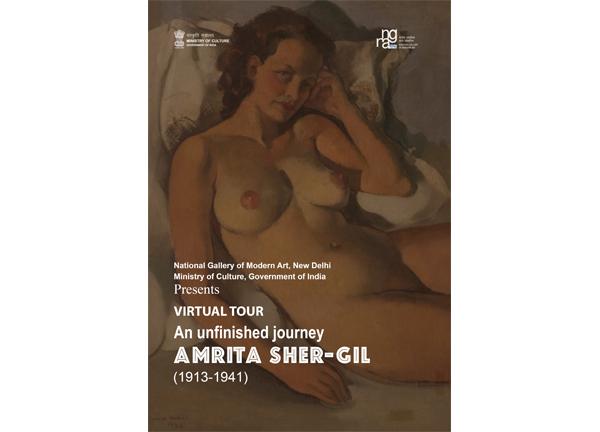
×
Concept Note
Virtual Tour | An Unfinished Journey | Amrita Sher-Gil
The first modernist Indian Woman Artist
The Virtual Tour titled "An Unfinished Journey | Amrita Sher-Gil" is organized to commemorate the 109th Birth Anniversary of Amrita Sher-Gil on 30th January 2021.
Amrita Sher-Gil flashed through the Indian artistic horizon like an incandescent meteor. Her place in the trajectory of Indian modern art is unquestionably pre eminent. Her aesthetic sensibility shows not surprisingly a blend of European and Indian elements. Her command over handling of oil medium and use of colour, as well as her vigorous brushwork and strong feeling for composition, all go towards giving a dazzling quality to her genius. Sher-Gil's sikh father, Umrao Singh Sher-Gil was an owner of landed estates and among other things, he was also a skilled photographer. Her mother, Marie Antoinette was a Hungarian. Sher- Gil's art education was completed in Paris where she was influenced by the post impressionists like Gauguin. While her childhood years were spent travelling between India and Europe, she returned to India in the mid 30s of the 20th century with a wish to make India her home. It was at this time her ways of seeing changed radically. Sher-Gil looked at the Indian art traditions with a fresh eye and she gazed at the sad-eyed people around her with empathy. She became excited by the Indian miniature traditions and as a consequence of her travels to the rock cut caves of Ajanta and Ellora and through South India, her visual language underwent a dramatic transformation. Both the palette, which became saturated with intense reds, ochres, browns, yellows and greens, and her figuration expressed a new visual reality. But she interspersed these paintings of her land and its people with paintings that she practiced in Paris. It is interesting to note that in the mid-1930s, when Amrita Sher-Gil explored a new expressive style to represent the Indian themes that she painted, there was a lot of experimental work going on at the time. Rabindranath Tagore had already exhibited his expressionist style of painting in Europe and was vigorously continuing to paint haunting images. Jamini Roy was drawing critical attention with his folk idiom and the Santiniketan masters were engaged in making bold experiments with visual language. The dichotomy is perhaps one clue to her complex persona. Sher-Gil was passionate about life drinking what it had to offer to the dregs. And yet she harboured within her a deep sense of melancholy that found expression in the pensive faces of her subjects and their languorous poses. Sher-Gil's visual language introduced a host of new elements in modern Indian art. For one, her handling of the oil medium opened up new possibilities for a future generation of artists. Her distinctive vision left its mark on pre-Independence modern painting. Besides her subtly expressive representation of the female figure, Sher-Gil also wove in ingeniously narrative elements of miniature paintings in her work. Also, for the first time, we see intimate portrayals of domestic scenes. The NGMA has a large collection of 103 of her paintings covering an extensive range of her important works both from her Paris days and from her Indian stay.
This virtual tour presents the entire 103 works of art of Amrita Sher-Gil from reserve collection of NGMA, grouped in a series of nine different sub-headings by place and date, but the sequence in which they are placed within each follows logic of 'visual' content rather than strict chronology. Moreover each section follows in the ascending order of accession number.
I take pride of the tireless effort of our entire IT Cell to conceive and conceptualize the idea of launching a series of Virtual Tours and designed and developed the same during this pandemic period to facilitate our esteemed visitors with the prestigious collection of NGMA.
←
→
-

×
Concept Note
Virtual Tour | An Unfinished Journey | Amrita Sher-Gil
The first modernist Indian Woman Artist
The Virtual Tour titled "An Unfinished Journey | Amrita Sher-Gil" is organized to commemorate the 109th Birth Anniversary of Amrita Sher-Gil on 30th January 2021.
Amrita Sher-Gil flashed through the Indian artistic horizon like an incandescent meteor. Her place in the trajectory of Indian modern art is unquestionably pre eminent. Her aesthetic sensibility shows not surprisingly a blend of European and Indian elements. Her command over handling of oil medium and use of colour, as well as her vigorous brushwork and strong feeling for composition, all go towards giving a dazzling quality to her genius. Sher-Gil's sikh father, Umrao Singh Sher-Gil was an owner of landed estates and among other things, he was also a skilled photographer. Her mother, Marie Antoinette was a Hungarian. Sher- Gil's art education was completed in Paris where she was influenced by the post impressionists like Gauguin. While her childhood years were spent travelling between India and Europe, she returned to India in the mid 30s of the 20th century with a wish to make India her home. It was at this time her ways of seeing changed radically. Sher-Gil looked at the Indian art traditions with a fresh eye and she gazed at the sad-eyed people around her with empathy. She became excited by the Indian miniature traditions and as a consequence of her travels to the rock cut caves of Ajanta and Ellora and through South India, her visual language underwent a dramatic transformation. Both the palette, which became saturated with intense reds, ochres, browns, yellows and greens, and her figuration expressed a new visual reality. But she interspersed these paintings of her land and its people with paintings that she practiced in Paris. It is interesting to note that in the mid-1930s, when Amrita Sher-Gil explored a new expressive style to represent the Indian themes that she painted, there was a lot of experimental work going on at the time. Rabindranath Tagore had already exhibited his expressionist style of painting in Europe and was vigorously continuing to paint haunting images. Jamini Roy was drawing critical attention with his folk idiom and the Santiniketan masters were engaged in making bold experiments with visual language. The dichotomy is perhaps one clue to her complex persona. Sher-Gil was passionate about life drinking what it had to offer to the dregs. And yet she harboured within her a deep sense of melancholy that found expression in the pensive faces of her subjects and their languorous poses. Sher-Gil's visual language introduced a host of new elements in modern Indian art. For one, her handling of the oil medium opened up new possibilities for a future generation of artists. Her distinctive vision left its mark on pre-Independence modern painting. Besides her subtly expressive representation of the female figure, Sher-Gil also wove in ingeniously narrative elements of miniature paintings in her work. Also, for the first time, we see intimate portrayals of domestic scenes. The NGMA has a large collection of 103 of her paintings covering an extensive range of her important works both from her Paris days and from her Indian stay.
This virtual tour presents the entire 103 works of art of Amrita Sher-Gil from reserve collection of NGMA, grouped in a series of nine different sub-headings by place and date, but the sequence in which they are placed within each follows logic of 'visual' content rather than strict chronology. Moreover each section follows in the ascending order of accession number.
I take pride of the tireless effort of our entire IT Cell to conceive and conceptualize the idea of launching a series of Virtual Tours and designed and developed the same during this pandemic period to facilitate our esteemed visitors with the prestigious collection of NGMA.
Adwaita Charan Gadanayak
Director General, NGMA
-
Painting
Self Portrait (3) Acc. No. 1 | Oil on Paper
×
From 1930 onwards during her student days, Amrita Sher-Gil painted a series of self portraits. Many of them captured her in the act of painting. This is one of them.
-
Painting
Adam and Eve Acc. No. 2 | Oil on Canvas
×
This painting appears to have been done early in her student years between 1929 and 1934.
-
Painting
Self Portrait (4) Acc. No. 3 | Oil on Canvas
×
From 1930 onwards, Amrita Sher-Gil did a series of self portraits reflecting her many moods during her student years. This is one of them.
-
Painting
Yusuf Ali Khan Acc. No. 5 | Oil on Canvas
×
Yusuf Ali Khan was the scion of a noble land-owning family of the then United Provinces in India. Amrita Sher-Gil was engaged to him for a while in the early '30s of the Twentieth century. She probably had painted his portrait during their relationship. But, by 1931, she became disillusioned with him and broke off her engagement.
-
Painting
Potted Plant in Blossom Acc. No. 6 | Oil on Canvas
-
Painting
Boat Acc. No. 7 | Oil on Canvas
×
This work may have been done by Amrita Sher-Gil during her student years at the Ecole des Beaux Arts in Paris in the early 30s of the Twentieth century.
-
Painting
Madam Tachlitzky Acc. No. 8 | Oil on Canvas
×
The painting must have been done c.early 30s of the 20th century while Amrita Sher-Gil was still a student of Ecole Nationale des Beaux Arts. In 1930, Sher-Gil painted a portrait of friend and fellow student Boris Tazlilsky. The last name has been variously spelt by different scholars. It could quite possible be that Madam Tachlitzky was related to Sher-Gil's friend, Boris Tachlitzky. During this early phase Sher-Gil adopted a certain realism in her portrayal and was excited about the handling of paint and building up the surface with pigment.
-
Painting
Still Life (1) Acc. No. 11 | Oil on Canvas
×
This work may have been done by Amrita Sher-Gil during her student years at the Ecole des Beaux Arts in Paris in the early 30s of the Twentieth century.
-
Painting
Alfred Cortot Acc. No. 12 | Pastel on paper
×
In 1929, when the Sher-Gil family arrived in Paris, Amrita Sher-Gil and her sister Indira were enrolled at the Ecole Normale des Musique founded by Alfred Cortot. Although, Amrita soon gave up her piano lessons, she remained passionately attracted to music. This portrait of the great music teacher and musician may have been done soon after she joined Ecole des Beaux Arts, her art school in Paris.
-
Painting
Klara Szepessy Acc. No. 13 | Oil on Canvas
×
This painting has been dated to 1934 by Gyula Wojtilla. Klarra Szepessy, the subject of this portrait, was a cousin of Amrita Sher-Gil. Between 1929-34, Amrita Sger-Gil spent her summer holidays in Hungary with her family and was in close touch with her Hungarian relatives.
-
Painting
Department Store Acc. No. 14 | Oil on Canvas
×
Possibly done in the early 1930s when Amrita Sher-Gil was studying art in Ecole des Beaux Arts in Paris.
-
Painting
Self Portrait (5) Acc. No. 15 | Oil on Paper
×
Among the series of self-portraits that Amrita Sher-Gil had done during her student days in Paris in the early '30s of the Twentieth century, this one is the fifth. She has often portrayed herself in the act of painting and this work is one such.
-
Painting
Self Portrait (2) Acc. No. 17 | Oil on Canvas
×
Beginning 1930, Amrita Sher-Gil has painted a series of self- portraits. In many of them, she has represented herself at work thus establishing herself as an artist. She has also captured herself in many moods.
-
Painting
My Grandmother Acc. No. 20 | Oil on Canvas
×
In 1934, Amrita Sher-Gil painted a portrait of her maternal grandmother, Mrs. Raoul Gottesmann. Through her student years in Paris, Amrita would regularly visit Hungary during her vacations.
-
Painting
Dressing Table Acc. No. 21 | Oil on Canvas
×
In 1934, Amrita Sher-Gil painted a portrait of her maternal grandmother, Mrs. Raoul Gottesmann. Through her student years in Paris, Amrita would regularly visit Hungary during her vacations.
-
Painting
Portrait of a Young Woman Acc. No. 22 | Oil on Canvas
×
During her student years at Ecole des Beaux Arts in Paris between 1929-1934, Amrita Sher-Gil made several portraits of her friends and fellow students as well as figure studies of models. This portrait, possibly had been done at that time.
-
Painting
Portrait Study Acc. No. 23 | Oil on Canvas
×
During her student years at Ecole des Beaux Arts in Paris between 1929 and 1934, Amrita Sher-Gil made several portraits of her friends and fellow students as well as figure studies of models. This portrait, possibly had been done at that time.
-
Painting
Girl in Mauve (2) Acc. No. 24 | Oil on Canvas
×
This portrait may have been painted by Amrita Sher-Gil during her student years at the Ecole de Beaux Arts in Paris in the early '30s of the Twentieth century when the artist made a number of portraits of friends, family, fellow students and professional models.
-
Painting
Denise Proutaux Acc. No. 25 | Oil on Canvas
×
Amrita Sher-Gil painted Denise Proutaux more than once. She was a friend of the artist and has been described as a Parisian art critic by art historian Partha Mitter in his book Triumph of Modernism.
-
Painting
Self Portrait (7) Acc. No. 26 | Oil on Canvas
×
From 1930 onwards, Amrita Sher-Gil painted a series of self- portraits representing her many moods. This seductive and exuberant mood that she has captured is relatively rare in her series of self-portraits.
-
Painting
Boris Tachlitzky Acc. No. 27 | Oil on Canvas
×
Amrita Sher-Gil painted more than one portrait of Boris Tachlitzky from 1930 to 1932. Tachlitzky, a left-wing artist, was a fellow student of Sher-Gil in Paris. Art historian Deepak Ananth describes him also as a one-time lover of Sher-Gil. (Deepak Ananth, Amrita Sher-Gil; An Indian Artist Family of the Twentieth Century, Schimer/Mosel, 2007 p.16)
-
Painting
Young Man with Apples Acc. No. 28 | Oil on Canvas
×
Between 1930 and 1932, Amrita Sher-Gil had painted many portraits of friends, family members and fellow-students. This portrait was done in 1932.
-
Painting
Young Girls Acc. No. 29 | Oil on Canvas
×
This painting done in 1932 won Amrita Sher-Gil an associate membership at the Grand Salon in 1933. Sher-Gil's sister Indira was the formally clad figure of the visitor in the painting.
-
Painting
Study of Model (1) Acc. No. 33 | Oil on Canvas
×
In the early '30s of the Twentieth century, Amrita Sher-Gil painted several portraits and figure studies of professional models while she was a student of the Ecole des Beaux Arts in Paris.
-
Painting
Marie-Louise Chassany Acc. No. 36 | Oil on Canvas
×
In 1932, Amrita Sher-Gil painted this sad, somber portrait of Marie Louise Chassany, who was a fellow student at the Ecole des Beaux Arts and also an intimate friend.
-
Painting
Male Torso Acc. No. 37 | Oil on Canvas
×
Between 1930 and 1932, Amrita Sher- Gil painted many portraits and figure studies of friends, family members, fellow-students and professional models.
-
Painting
Nude Study (2) Acc. No. 38 | Oil on Canvas
×
Between 1930 and 1932, Amrita Sher- Gil painted many portraits and figure studies of friends, family members, fellow-students and professional models while she was at Ecole des Beaux Arts.
-
Painting
Sitting Nude (2) Acc. No. 39 | Oil on Canvas
×
Signed and dated 'Amrita Sher-Gil, 1931, Paris' at the lower left corner of the painting. Between 1930 and 1932, Amrita Sher- Gil painted many portraits and figure studies of friends, family members, fellow-students and professional models while she was at Ecole des Beaux Arts.
-
Painting
Nude Study (3) Acc. No. 44 | Oil on Canvas
×
In the first half of the '30s of the Twentieth Century, Amrita Sher-Gil during her student years in Paris painted many female nudes of family members, friends and professional models.
-
Painting
Nude Study (6) Acc. No. 45 | Oil on Canvas
×
In the first half of the '30s of the Twentieth Century, Amrita Sher-Gil during her student years in Paris painted many female nudes of family members, friends and professional models.
-
Painting
Sitting Nude (1) Acc. No. 46 | Oil on Canvas
×
In the first half of the '30s of the Twentieth Century, Amrita Sher-Gil during her student years in Paris painted many female nudes of family members, friends and professional models.
-
Painting
Nude Study (4) Acc. No. 47 | Charcoal drawing on paper
×
In the first half of the '30s of the Twentieth Century, Amrita Sher-Gil during her student years in Paris painted many female nudes of family members, friends and professional models.
-
Painting
Nude Study (8) Acc. No. 49 | Oil on Canvas
×
During the early '30s of the Twentieth century, while Amrita Sher-Gil was a student of Ecole des Beaux Arts, she painted a number of portraits and figure studies of friends, family, fellow students and professional models.
-
Painting
Torso Acc. No. 50 | Oil on Canvas
×
Painted in 1931, this painting belongs to a period when Amrita Sher-Gil was painting a number of portraits and figure studies, particularly female nudes while she was still a student of Ecole des Beaux Arts in Paris.
-
Painting
Nude Study (1) Acc. No. 52 | Charcoal drawing on paper
×
In the early '30s of the Twentieth century, Amrita Sher-Gil did a number of Portraits and figure studies while she was at the Ecole des Beaux Arts in Paris. The subjects were friends, fellow-students, family members and professional models.
-
Painting
Nude Study (5) Acc. No. 53 | Oil on Canvas
×
In the early '30s of the Twentieth century, while Amrita Sher- Gil was still a student at the Ecole des Beaux Arts in Paris, she painted several portraits and figure studies, particularly of nudes. The subjects chosen from her friends, fellow students, family members and professional models.
-
Painting
Nude Study (7) Acc. No. 54 | Oil on Canvas
×
In the early '30s of the Twentieth century, while Amrita Sher- Gil was still a student at the Ecole des Beaux Arts in Paris, she painted several portraits and figure studies, particularly of nudes. The subjects chosen from her friends, fellow students, family members and professional models.
-
Painting
Self Portrait (6) Acc. No. 96 | Oil on Canvas
×
Around 1930, Amrita Sher-Gil painted a series of self portraits reflecting her many moods. In this self portrait done in 1930 the artist depicts an effervescent, charming young woman. The paintings of this period show a building up of the surface with a thick layering of pigments.
-
Painting
Self Portrait (1) Acc. No. 98 | Oil on Paper
×
Around 1930 when she was a student at the Ecole des Beaux Arts in Paris, Amrita Sher-Gil painted a series of self-portraits. Many of them show her at work. In this self-portrait, she seems to be holding a brush or a pencil in her raised left hand.
-
Painting
Notre Dame Acc. No. 99 | Oil on canvas pasted on board
×
Amrita Sher-Gil may have done this painting in the early '30s of the twentieth century while she was a student at the Ecole des Beaux Arts in Paris.
-
Painting
Violins Acc. No. 100 | Oil on Canvas
×
Possibly painted in the early '30s of the Twentieth century while Amrita Sher-Gil was still a student at the Ecole des Beaux Arts in Paris. It should be remembered that Amrita Sher-Gil came from a musical family and her mother was an accomplished musical performer. Sher-Gil also had music lessons when she first came to Paris in 1929 as a student.
-
Painting
Self Portraits (9) Acc. No. 101 | Oil on Canvas
×
Around 1930, while Amrita Sher-Gil was a student of Ecole des Beaux Arts she painted a series of self portraits representing herself in her many moods. Here she is shown as an elegant, fur- clad young lady.
-
Painting
Still Life (2) Acc. No. 954 | Oil on Canvas
×
In the early '30s of the Twentieth century, Amrita Sher-gil practiced all genres of painting while studying art at the Ecole des Beaux Arts in Paris.
-
Painting
Self Portrait (8) Acc. No. 966 | Oil on Canvas
×
From the 1930's while Amrita Sher-Gil was still a student at the Ecole des Beaux Arts, she painted a series of self portraits representing her many moods.
-
Painting
Hungarian Gypsy Girl Acc. No. 974 | Oil on Canvas
×
This painting may have been done in 1932 during a summer vacation at the Hungarian village, Zebegery. But Indologist and historian Gyula Wojtilla, who had recorded in Amrita Sher-Gil and Hungary, the paintings that the artist had done during her stay in Hungary does not record this work. One deduces the date from another painting of a gypsy girl done in Hungary in 1932.
-
Painting
Portrait of a Young Man Acc. No. 975 | Oil on Canvas
×
This painting done by Amrita Sher-Gil in 1930 shows a beautiful likeness of friend and fellow-artist, Boris Tazlitsky. The works shows her painterly skills even when she was a very young student at Ecole des Beaux Arts in Paris. Her handling of pigment and surface is quite remarkable.
←
→
-

×
Concept Note
Virtual Tour | An Unfinished Journey | Amrita Sher-Gil
The first modernist Indian Woman Artist
The Virtual Tour titled "An Unfinished Journey | Amrita Sher-Gil" is organized to commemorate the 109th Birth Anniversary of Amrita Sher-Gil on 30th January 2021.
Amrita Sher-Gil flashed through the Indian artistic horizon like an incandescent meteor. Her place in the trajectory of Indian modern art is unquestionably pre eminent. Her aesthetic sensibility shows not surprisingly a blend of European and Indian elements. Her command over handling of oil medium and use of colour, as well as her vigorous brushwork and strong feeling for composition, all go towards giving a dazzling quality to her genius. Sher-Gil's sikh father, Umrao Singh Sher-Gil was an owner of landed estates and among other things, he was also a skilled photographer. Her mother, Marie Antoinette was a Hungarian. Sher- Gil's art education was completed in Paris where she was influenced by the post impressionists like Gauguin. While her childhood years were spent travelling between India and Europe, she returned to India in the mid 30s of the 20th century with a wish to make India her home. It was at this time her ways of seeing changed radically. Sher-Gil looked at the Indian art traditions with a fresh eye and she gazed at the sad-eyed people around her with empathy. She became excited by the Indian miniature traditions and as a consequence of her travels to the rock cut caves of Ajanta and Ellora and through South India, her visual language underwent a dramatic transformation. Both the palette, which became saturated with intense reds, ochres, browns, yellows and greens, and her figuration expressed a new visual reality. But she interspersed these paintings of her land and its people with paintings that she practiced in Paris. It is interesting to note that in the mid-1930s, when Amrita Sher-Gil explored a new expressive style to represent the Indian themes that she painted, there was a lot of experimental work going on at the time. Rabindranath Tagore had already exhibited his expressionist style of painting in Europe and was vigorously continuing to paint haunting images. Jamini Roy was drawing critical attention with his folk idiom and the Santiniketan masters were engaged in making bold experiments with visual language. The dichotomy is perhaps one clue to her complex persona. Sher-Gil was passionate about life drinking what it had to offer to the dregs. And yet she harboured within her a deep sense of melancholy that found expression in the pensive faces of her subjects and their languorous poses. Sher-Gil's visual language introduced a host of new elements in modern Indian art. For one, her handling of the oil medium opened up new possibilities for a future generation of artists. Her distinctive vision left its mark on pre-Independence modern painting. Besides her subtly expressive representation of the female figure, Sher-Gil also wove in ingeniously narrative elements of miniature paintings in her work. Also, for the first time, we see intimate portrayals of domestic scenes. The NGMA has a large collection of 103 of her paintings covering an extensive range of her important works both from her Paris days and from her Indian stay.
This virtual tour presents the entire 103 works of art of Amrita Sher-Gil from reserve collection of NGMA, grouped in a series of nine different sub-headings by place and date, but the sequence in which they are placed within each follows logic of 'visual' content rather than strict chronology. Moreover each section follows in the ascending order of accession number.
I take pride of the tireless effort of our entire IT Cell to conceive and conceptualize the idea of launching a series of Virtual Tours and designed and developed the same during this pandemic period to facilitate our esteemed visitors with the prestigious collection of NGMA.
Adwaita Charan Gadanayak
Director General, NGMA
-
Painting
Grapes Acc. No. 4 | Oil on Canvas
×
This work may have been done by Amrita Sher-Gil during her student years at the Ecole des Beaux Arts in Paris in the early 30s of the Twentieth century.
-
Painting
Spanish Girl Acc. No. 9 | Oil on Canvas
×
This work may have been done by Amrita Sher-Gil during her student years at Ecole des Beaux Arts in Paris in the early 30s of the Twentieth century.
-
Painting
Open Air Painters Acc. No. 10 | Oil on Canvas
×
This painting must have been done c.early 30s of the 20th century when Amrita Sher-Gil was still studying art at Ecole des Beaux Arts, Paris. She was influenced by both academic realism and post- impressionist trends current at the time. These young painters working in an alfresco setting point to the post-impressionist influence.
-
Painting
Study of Model (2) Acc. No. 18 | Oil on Canvas
×
The painting is dated 1934 in the catalogue Amrita Sher-Gil: An Indian artist family of the Twentieth Century. Sher-Gil must have painted this study while she was still training at the Ecole Nationale des Beaux Arts in Paris.
-
Painting
Study of Model (3) Acc. No. 19 | Oil on Canvas
×
This painting is dated 1933 in the catalogue Amrita Sher-Gil: An Indian artist family of the Twentieth Century, 2007. Sher-Gil must have painted this study while she was still training at the Ecole Nationale des Beaux Arts in Paris.
-
Painting
Sleep Acc. No. 40 | Oil on Canvas
×
Signed and dated 'Amrita Sher-Gil, 1931, Paris' at the lower left corner of the painting. Between 1930 and 1932, Amrita Sher- Gil painted many portraits and figure studies of friends, family members, fellow-students and professional models while she was at Ecole des Beaux Arts.
-
Painting
Reclining Nude Acc. No. 43 | Oil on Canvas
×
Art-historian Deepak Ananth has titled this painting in the exhibition mentioned above as Reclining Nude. This is one of the several female nudes that Amrita Sher-Gil painted in the first half of the 30's of the twentieth century.
-
Painting
Professional Model Acc. No. 48 | Oil on Canvas
×
Painted in 1933 when Amrita Sher-Gil was still a student in Paris, it represents the flaccid flesh of an ageing woman. The painting highlights Amrita Sher-Gils melancholic vision of a woman's body.
-
Painting
Vine Acc. No. 97 | Oil on Canvas
←
→
-

×
Concept Note
Virtual Tour | An Unfinished Journey | Amrita Sher-Gil
The first modernist Indian Woman Artist
The Virtual Tour titled "An Unfinished Journey | Amrita Sher-Gil" is organized to commemorate the 109th Birth Anniversary of Amrita Sher-Gil on 30th January 2021.
Amrita Sher-Gil flashed through the Indian artistic horizon like an incandescent meteor. Her place in the trajectory of Indian modern art is unquestionably pre eminent. Her aesthetic sensibility shows not surprisingly a blend of European and Indian elements. Her command over handling of oil medium and use of colour, as well as her vigorous brushwork and strong feeling for composition, all go towards giving a dazzling quality to her genius. Sher-Gil's sikh father, Umrao Singh Sher-Gil was an owner of landed estates and among other things, he was also a skilled photographer. Her mother, Marie Antoinette was a Hungarian. Sher- Gil's art education was completed in Paris where she was influenced by the post impressionists like Gauguin. While her childhood years were spent travelling between India and Europe, she returned to India in the mid 30s of the 20th century with a wish to make India her home. It was at this time her ways of seeing changed radically. Sher-Gil looked at the Indian art traditions with a fresh eye and she gazed at the sad-eyed people around her with empathy. She became excited by the Indian miniature traditions and as a consequence of her travels to the rock cut caves of Ajanta and Ellora and through South India, her visual language underwent a dramatic transformation. Both the palette, which became saturated with intense reds, ochres, browns, yellows and greens, and her figuration expressed a new visual reality. But she interspersed these paintings of her land and its people with paintings that she practiced in Paris. It is interesting to note that in the mid-1930s, when Amrita Sher-Gil explored a new expressive style to represent the Indian themes that she painted, there was a lot of experimental work going on at the time. Rabindranath Tagore had already exhibited his expressionist style of painting in Europe and was vigorously continuing to paint haunting images. Jamini Roy was drawing critical attention with his folk idiom and the Santiniketan masters were engaged in making bold experiments with visual language. The dichotomy is perhaps one clue to her complex persona. Sher-Gil was passionate about life drinking what it had to offer to the dregs. And yet she harboured within her a deep sense of melancholy that found expression in the pensive faces of her subjects and their languorous poses. Sher-Gil's visual language introduced a host of new elements in modern Indian art. For one, her handling of the oil medium opened up new possibilities for a future generation of artists. Her distinctive vision left its mark on pre-Independence modern painting. Besides her subtly expressive representation of the female figure, Sher-Gil also wove in ingeniously narrative elements of miniature paintings in her work. Also, for the first time, we see intimate portrayals of domestic scenes. The NGMA has a large collection of 103 of her paintings covering an extensive range of her important works both from her Paris days and from her Indian stay.
This virtual tour presents the entire 103 works of art of Amrita Sher-Gil from reserve collection of NGMA, grouped in a series of nine different sub-headings by place and date, but the sequence in which they are placed within each follows logic of 'visual' content rather than strict chronology. Moreover each section follows in the ascending order of accession number.
I take pride of the tireless effort of our entire IT Cell to conceive and conceptualize the idea of launching a series of Virtual Tours and designed and developed the same during this pandemic period to facilitate our esteemed visitors with the prestigious collection of NGMA.
Adwaita Charan Gadanayak
Director General, NGMA
-
Painting
Malcolm Muggeridge Acc. No. 16 | Oil on Canvas
×
In 1935, Amrita Sher-Gil formed a close relationship with the British journalist, Malcolm Muggeridge at Shimla. It was during this friendship that Sher-Gil painted a portrait of her friend.
-
Painting
Nude Group Acc. No. 51 | Oil on Canvas
×
Scholars have commented on the influence of Gaugin in Amrita Sher-Gil's visual language particularly in this work done in 1935.
-
Painting
Woman Holding Fan Acc. No. 106 | Oil on Canvas
×
Painted in the latter half of '30s or early '40s of the Twetieth century, Amrita Sher-Gil was engaged in capturing the ordinary Indian men and women and locating them in their context.
-
Painting
Two Women Acc. No. 141 | Oil on canvas pasted on board
×
Amrita Sher-Gil painted this image in 1936. Ever since her return to India after her art studies in Paris, she wanted to paint the ordinary rural people of India. And she kept experimenting with her visual language in order to distil the hopelessness of their lives.
-
Painting
Group of Three Girls Acc. No. 982 | Oil on canvas pasted on board
-
Painting
Man in White Acc. No. 976 | Oil on Canvas
×
This painting was done by Amrita Sher-Gil in 1935, the first after her return from Europe following her art studies in Paris. This painting won her a gold medal from the Bombay Art Society. Art historian Partha Mitter has referred to this painting as The Three Women, while in the catalogue Amrita Sher-Gil: An Indian Artist Family of the Twentieth Century, the painting has been titled Group of Three Girls. We observe a change in her visual language compared to that of her paintings done in Europe. The influence of Gaugin in the flattened treatment of figures is noteworthy. The use of a brilliant red becomes more patent in her work from this time onwards.
-
Painting
Mother India Acc. No. 1134 | Oil on Canvas
×
Soon after her return to India, after completing her rat studies in Paris in 1934, Amrita Sher-Gil set about capturing the poor Indian villagers in her paintings from 1935 onwards. The faces of her subject at this time have their faces and stances steeped in melancholy and are marked by large, sad eyes. Mr. R.C. Tandon, from whom this painting had been purchased was a professor at the Allahabad University and had organized an exhibition of Amrita Sher-Gil's paintings in 1937 at the University campus.
←
→
-

×
Concept Note
Virtual Tour | An Unfinished Journey | Amrita Sher-Gil
The first modernist Indian Woman Artist
The Virtual Tour titled "An Unfinished Journey | Amrita Sher-Gil" is organized to commemorate the 109th Birth Anniversary of Amrita Sher-Gil on 30th January 2021.
Amrita Sher-Gil flashed through the Indian artistic horizon like an incandescent meteor. Her place in the trajectory of Indian modern art is unquestionably pre eminent. Her aesthetic sensibility shows not surprisingly a blend of European and Indian elements. Her command over handling of oil medium and use of colour, as well as her vigorous brushwork and strong feeling for composition, all go towards giving a dazzling quality to her genius. Sher-Gil's sikh father, Umrao Singh Sher-Gil was an owner of landed estates and among other things, he was also a skilled photographer. Her mother, Marie Antoinette was a Hungarian. Sher- Gil's art education was completed in Paris where she was influenced by the post impressionists like Gauguin. While her childhood years were spent travelling between India and Europe, she returned to India in the mid 30s of the 20th century with a wish to make India her home. It was at this time her ways of seeing changed radically. Sher-Gil looked at the Indian art traditions with a fresh eye and she gazed at the sad-eyed people around her with empathy. She became excited by the Indian miniature traditions and as a consequence of her travels to the rock cut caves of Ajanta and Ellora and through South India, her visual language underwent a dramatic transformation. Both the palette, which became saturated with intense reds, ochres, browns, yellows and greens, and her figuration expressed a new visual reality. But she interspersed these paintings of her land and its people with paintings that she practiced in Paris. It is interesting to note that in the mid-1930s, when Amrita Sher-Gil explored a new expressive style to represent the Indian themes that she painted, there was a lot of experimental work going on at the time. Rabindranath Tagore had already exhibited his expressionist style of painting in Europe and was vigorously continuing to paint haunting images. Jamini Roy was drawing critical attention with his folk idiom and the Santiniketan masters were engaged in making bold experiments with visual language. The dichotomy is perhaps one clue to her complex persona. Sher-Gil was passionate about life drinking what it had to offer to the dregs. And yet she harboured within her a deep sense of melancholy that found expression in the pensive faces of her subjects and their languorous poses. Sher-Gil's visual language introduced a host of new elements in modern Indian art. For one, her handling of the oil medium opened up new possibilities for a future generation of artists. Her distinctive vision left its mark on pre-Independence modern painting. Besides her subtly expressive representation of the female figure, Sher-Gil also wove in ingeniously narrative elements of miniature paintings in her work. Also, for the first time, we see intimate portrayals of domestic scenes. The NGMA has a large collection of 103 of her paintings covering an extensive range of her important works both from her Paris days and from her Indian stay.
This virtual tour presents the entire 103 works of art of Amrita Sher-Gil from reserve collection of NGMA, grouped in a series of nine different sub-headings by place and date, but the sequence in which they are placed within each follows logic of 'visual' content rather than strict chronology. Moreover each section follows in the ascending order of accession number.
I take pride of the tireless effort of our entire IT Cell to conceive and conceptualize the idea of launching a series of Virtual Tours and designed and developed the same during this pandemic period to facilitate our esteemed visitors with the prestigious collection of NGMA.
Adwaita Charan Gadanayak
Director General, NGMA
-
Painting
Sumair Acc. No. 35 | Oil on Canvas
×
Amrita Sher-Gil often painted the portraits of friends, family and fellow students. Sumair was the artist's cousin.
-
Painting
Study for 'Composition' Acc. No. 152 | Oil on Canvas
×
A meticulous artist, it was not unusual for Amrita Sher-Gil to paint such preparatory exercises.
-
Sketches
Pencil Sketch No. 1 Acc. No. 3613 | Pencil on paper
-
Sketches
Pencil Sketch No. 2 Acc. No. 3614 | Pencil on paper
-
Sketches
Pencil Sketch No. 3 Acc. No. 3615 | Pencil on paper
-
Sketches
Pencil Sketch No. 4 Acc. No. 3616 | Pencil on paper
-
Sketches
Pencil Sketch No. 5 Acc. No. 3617 | Pencil on paper
←
→
-

×
Concept Note
Virtual Tour | An Unfinished Journey | Amrita Sher-Gil
The first modernist Indian Woman Artist
The Virtual Tour titled "An Unfinished Journey | Amrita Sher-Gil" is organized to commemorate the 109th Birth Anniversary of Amrita Sher-Gil on 30th January 2021.
Amrita Sher-Gil flashed through the Indian artistic horizon like an incandescent meteor. Her place in the trajectory of Indian modern art is unquestionably pre eminent. Her aesthetic sensibility shows not surprisingly a blend of European and Indian elements. Her command over handling of oil medium and use of colour, as well as her vigorous brushwork and strong feeling for composition, all go towards giving a dazzling quality to her genius. Sher-Gil's sikh father, Umrao Singh Sher-Gil was an owner of landed estates and among other things, he was also a skilled photographer. Her mother, Marie Antoinette was a Hungarian. Sher- Gil's art education was completed in Paris where she was influenced by the post impressionists like Gauguin. While her childhood years were spent travelling between India and Europe, she returned to India in the mid 30s of the 20th century with a wish to make India her home. It was at this time her ways of seeing changed radically. Sher-Gil looked at the Indian art traditions with a fresh eye and she gazed at the sad-eyed people around her with empathy. She became excited by the Indian miniature traditions and as a consequence of her travels to the rock cut caves of Ajanta and Ellora and through South India, her visual language underwent a dramatic transformation. Both the palette, which became saturated with intense reds, ochres, browns, yellows and greens, and her figuration expressed a new visual reality. But she interspersed these paintings of her land and its people with paintings that she practiced in Paris. It is interesting to note that in the mid-1930s, when Amrita Sher-Gil explored a new expressive style to represent the Indian themes that she painted, there was a lot of experimental work going on at the time. Rabindranath Tagore had already exhibited his expressionist style of painting in Europe and was vigorously continuing to paint haunting images. Jamini Roy was drawing critical attention with his folk idiom and the Santiniketan masters were engaged in making bold experiments with visual language. The dichotomy is perhaps one clue to her complex persona. Sher-Gil was passionate about life drinking what it had to offer to the dregs. And yet she harboured within her a deep sense of melancholy that found expression in the pensive faces of her subjects and their languorous poses. Sher-Gil's visual language introduced a host of new elements in modern Indian art. For one, her handling of the oil medium opened up new possibilities for a future generation of artists. Her distinctive vision left its mark on pre-Independence modern painting. Besides her subtly expressive representation of the female figure, Sher-Gil also wove in ingeniously narrative elements of miniature paintings in her work. Also, for the first time, we see intimate portrayals of domestic scenes. The NGMA has a large collection of 103 of her paintings covering an extensive range of her important works both from her Paris days and from her Indian stay.
This virtual tour presents the entire 103 works of art of Amrita Sher-Gil from reserve collection of NGMA, grouped in a series of nine different sub-headings by place and date, but the sequence in which they are placed within each follows logic of 'visual' content rather than strict chronology. Moreover each section follows in the ascending order of accession number.
I take pride of the tireless effort of our entire IT Cell to conceive and conceptualize the idea of launching a series of Virtual Tours and designed and developed the same during this pandemic period to facilitate our esteemed visitors with the prestigious collection of NGMA.
Adwaita Charan Gadanayak
Director General, NGMA
-
Painting
Village Girl Acc. No. 42 | Oil on Canvas
×
Amrita Sher-Gil may have painted this work in the latter half of the 30s of the Twentieth century. It is most likely to have been painted in 1937 when the artist, during a tour of South India painted a number of dark-toned figures draped in white garments.
-
Painting
Bride's Toilet Acc. No. 69 | Oil on Canvas
×
Part of the South Indian trilogy, Bride's Toilet along with paintings done in this period was inspired by the classical tradition of the Ajanta murals. Amrita Sher-Gil painted the image with a large group of figures and used a richly diverse palette to delineate them.
-
Painting
Brahmacharis Acc. No. 70 | Oil on Canvas
×
Many scholars consider Brahmacharis as one of Amrita Sher Gil's greatest masterpieces. The painting is a part of the South Indian trilogy that resulted from the artitst's sojourn in the South in 1937. Sher-Gil's experience of the Ajanta murals inspired her visual language at this time particularly in the figuration and gestures.
-
Painting
Siesta Acc. No. 102 | Oil on Canvas
×
Amrita Sher-Gil painted this work in 1937. Inspiration of miniature painting traditions is patent in this work. The female body in repose laden with a passive sexuality is emerging as a favourite subject of the artist. Sher Gil is also well on her way to evolving a fresh genre of domestic scenes.
-
Painting
Two Mendicants Acc. No. 109 | Oil on Canvas
×
Painted during the latter half of the '30's of Twentieth century, Amrita Sher-Gil was engaged in trying to capture the ordinary men and women and locating them in their context.
-
Painting
Mendicant Acc. No. 111 | Oil on Canvas
×
In the latter of the 30's and early 40's of the Twentieth century, Amrita Sher-Gil was engaged in trying to capture the ordinary men and women and locating them in their context.
-
Painting
Namaskar Acc. No. 981 | Oil on Canvas
×
The visual style of this painting by Amrita Sher-Gil is reminiscent of the South India trilogy.
-
Painting
My Grand Mother Lady Jasbir Kaur (Rani Lady Daljit Singh of Kapurthala) Acc. No. 12939 | Oil on Canvas
←
→
-

×
Concept Note
Virtual Tour | An Unfinished Journey | Amrita Sher-Gil
The first modernist Indian Woman Artist
The Virtual Tour titled "An Unfinished Journey | Amrita Sher-Gil" is organized to commemorate the 109th Birth Anniversary of Amrita Sher-Gil on 30th January 2021.
Amrita Sher-Gil flashed through the Indian artistic horizon like an incandescent meteor. Her place in the trajectory of Indian modern art is unquestionably pre eminent. Her aesthetic sensibility shows not surprisingly a blend of European and Indian elements. Her command over handling of oil medium and use of colour, as well as her vigorous brushwork and strong feeling for composition, all go towards giving a dazzling quality to her genius. Sher-Gil's sikh father, Umrao Singh Sher-Gil was an owner of landed estates and among other things, he was also a skilled photographer. Her mother, Marie Antoinette was a Hungarian. Sher- Gil's art education was completed in Paris where she was influenced by the post impressionists like Gauguin. While her childhood years were spent travelling between India and Europe, she returned to India in the mid 30s of the 20th century with a wish to make India her home. It was at this time her ways of seeing changed radically. Sher-Gil looked at the Indian art traditions with a fresh eye and she gazed at the sad-eyed people around her with empathy. She became excited by the Indian miniature traditions and as a consequence of her travels to the rock cut caves of Ajanta and Ellora and through South India, her visual language underwent a dramatic transformation. Both the palette, which became saturated with intense reds, ochres, browns, yellows and greens, and her figuration expressed a new visual reality. But she interspersed these paintings of her land and its people with paintings that she practiced in Paris. It is interesting to note that in the mid-1930s, when Amrita Sher-Gil explored a new expressive style to represent the Indian themes that she painted, there was a lot of experimental work going on at the time. Rabindranath Tagore had already exhibited his expressionist style of painting in Europe and was vigorously continuing to paint haunting images. Jamini Roy was drawing critical attention with his folk idiom and the Santiniketan masters were engaged in making bold experiments with visual language. The dichotomy is perhaps one clue to her complex persona. Sher-Gil was passionate about life drinking what it had to offer to the dregs. And yet she harboured within her a deep sense of melancholy that found expression in the pensive faces of her subjects and their languorous poses. Sher-Gil's visual language introduced a host of new elements in modern Indian art. For one, her handling of the oil medium opened up new possibilities for a future generation of artists. Her distinctive vision left its mark on pre-Independence modern painting. Besides her subtly expressive representation of the female figure, Sher-Gil also wove in ingeniously narrative elements of miniature paintings in her work. Also, for the first time, we see intimate portrayals of domestic scenes. The NGMA has a large collection of 103 of her paintings covering an extensive range of her important works both from her Paris days and from her Indian stay.
This virtual tour presents the entire 103 works of art of Amrita Sher-Gil from reserve collection of NGMA, grouped in a series of nine different sub-headings by place and date, but the sequence in which they are placed within each follows logic of 'visual' content rather than strict chronology. Moreover each section follows in the ascending order of accession number.
I take pride of the tireless effort of our entire IT Cell to conceive and conceptualize the idea of launching a series of Virtual Tours and designed and developed the same during this pandemic period to facilitate our esteemed visitors with the prestigious collection of NGMA.
Adwaita Charan Gadanayak
Director General, NGMA
-
Painting
Hill Scene Acc. No. 103 | Oil on Canvas
×
Amrita Sher-Gil painted this scene in 1938 before she left for her last visit to Hungary. It is clear that this painting belongs to a transitional phase in her work. Unlike her other works in India, beginning mid - 30s of the twentieth century, where the figures are always prominently fore grounded here the group of figures in a misty, winter landscape is insubstantial. She has built up a distance between the artist and her subject.
-
Painting
Women in Red Acc. No. 113 | Oil on Canvas
×
Amrita Sher-Gil focused on painting ordinary men and women from village India. She may have painted this work in the latter half of the '30's of the Twentieth century.
-
Painting
Hill Side Acc. No. 134 | Oil on Canvas
×
Amrita Sher-Gil painted this figure in landscape in 1938. Compared to the large figures foregrounded in her works done in 1937, she is taking a more detached view of the human figure, placing it almost insignificantly against the towering trees on the sloping hill side.
-
Painting
Red Verandah Acc. No. 153 | Oil on Canvas
×
This painting done by Amrita Sher-Gil in 1938, has been titled by art historian Geeta Kapur as Verandah with Red Pillars. Kapur in her book 'When Was Modernism', Tulika 2000 describes this genre of paintings as alternating "between indolence and pain, gossip and romance, intermittent festivity and daily submission."
←
→
-

×
Concept Note
Virtual Tour | An Unfinished Journey | Amrita Sher-Gil
The first modernist Indian Woman Artist
The Virtual Tour titled "An Unfinished Journey | Amrita Sher-Gil" is organized to commemorate the 109th Birth Anniversary of Amrita Sher-Gil on 30th January 2021.
Amrita Sher-Gil flashed through the Indian artistic horizon like an incandescent meteor. Her place in the trajectory of Indian modern art is unquestionably pre eminent. Her aesthetic sensibility shows not surprisingly a blend of European and Indian elements. Her command over handling of oil medium and use of colour, as well as her vigorous brushwork and strong feeling for composition, all go towards giving a dazzling quality to her genius. Sher-Gil's sikh father, Umrao Singh Sher-Gil was an owner of landed estates and among other things, he was also a skilled photographer. Her mother, Marie Antoinette was a Hungarian. Sher- Gil's art education was completed in Paris where she was influenced by the post impressionists like Gauguin. While her childhood years were spent travelling between India and Europe, she returned to India in the mid 30s of the 20th century with a wish to make India her home. It was at this time her ways of seeing changed radically. Sher-Gil looked at the Indian art traditions with a fresh eye and she gazed at the sad-eyed people around her with empathy. She became excited by the Indian miniature traditions and as a consequence of her travels to the rock cut caves of Ajanta and Ellora and through South India, her visual language underwent a dramatic transformation. Both the palette, which became saturated with intense reds, ochres, browns, yellows and greens, and her figuration expressed a new visual reality. But she interspersed these paintings of her land and its people with paintings that she practiced in Paris. It is interesting to note that in the mid-1930s, when Amrita Sher-Gil explored a new expressive style to represent the Indian themes that she painted, there was a lot of experimental work going on at the time. Rabindranath Tagore had already exhibited his expressionist style of painting in Europe and was vigorously continuing to paint haunting images. Jamini Roy was drawing critical attention with his folk idiom and the Santiniketan masters were engaged in making bold experiments with visual language. The dichotomy is perhaps one clue to her complex persona. Sher-Gil was passionate about life drinking what it had to offer to the dregs. And yet she harboured within her a deep sense of melancholy that found expression in the pensive faces of her subjects and their languorous poses. Sher-Gil's visual language introduced a host of new elements in modern Indian art. For one, her handling of the oil medium opened up new possibilities for a future generation of artists. Her distinctive vision left its mark on pre-Independence modern painting. Besides her subtly expressive representation of the female figure, Sher-Gil also wove in ingeniously narrative elements of miniature paintings in her work. Also, for the first time, we see intimate portrayals of domestic scenes. The NGMA has a large collection of 103 of her paintings covering an extensive range of her important works both from her Paris days and from her Indian stay.
This virtual tour presents the entire 103 works of art of Amrita Sher-Gil from reserve collection of NGMA, grouped in a series of nine different sub-headings by place and date, but the sequence in which they are placed within each follows logic of 'visual' content rather than strict chronology. Moreover each section follows in the ascending order of accession number.
I take pride of the tireless effort of our entire IT Cell to conceive and conceptualize the idea of launching a series of Virtual Tours and designed and developed the same during this pandemic period to facilitate our esteemed visitors with the prestigious collection of NGMA.
Adwaita Charan Gadanayak
Director General, NGMA
-
Painting
Hungarian Village Market Acc. No. 30 | Oil on Canvas
×
Indologist and historian Gyula Wojtilla titles this painting as The Hungarian Market Scene and dates its tentatively as done in 1938. However, in the catalogue accompanying the exhibition 'Amrita Sher-Gil: An Indian artist family of the Twentieth Century', the date ascribed to the painting is 1939.
-
Painting
The Potato Peeler Acc. No. 31 | Oil on Canvas
×
Indologist and historian Gyula Wojtilla titles this painting as The Hungarian Market Scene and dates its tentatively as done in 1938. However, in the catalogue accompanying the exhibition 'Amrita Sher-Gil: An Indian artist family of the Twentieth Century', the date ascribed to the painting is 1939.
-
Painting
The Merry Cemetery Acc. No. 32 | Oil on Canvas
×
Amrita Sher-Gil painted this village scene in 1939, the year she finally returned to India.
-
Painting
Female Torso Acc. No. 34 | Oil on Canvas
×
Amrita Sher-Gil had painted this nude figure in c.1938. The stylized rendering is different from the physicality of some of her other nude figures.
-
Painting
Hungarian Peasant Acc. No. 104 | Oil on Canvas
×
Amrita Sher-Gil painted this image in 1939 during her last sojourn in Hungary. She had painted at this time a number of village scenes in Hungary. Incidentally, Brueghel's scenes of peasant life had left a deep impress on her.
-
Painting
Winter Acc. No. 116 | Oil on Canvas
×
The stark winter landscape of Hungary in an austere monochrome was done in 1939, the year she finally returned to India. Her nephew, artist Vivan Sumdaram has used part of the painting in one of his photomontages on her life.
←
→
-

×
Concept Note
Virtual Tour | An Unfinished Journey | Amrita Sher-Gil
The first modernist Indian Woman Artist
The Virtual Tour titled "An Unfinished Journey | Amrita Sher-Gil" is organized to commemorate the 109th Birth Anniversary of Amrita Sher-Gil on 30th January 2021.
Amrita Sher-Gil flashed through the Indian artistic horizon like an incandescent meteor. Her place in the trajectory of Indian modern art is unquestionably pre eminent. Her aesthetic sensibility shows not surprisingly a blend of European and Indian elements. Her command over handling of oil medium and use of colour, as well as her vigorous brushwork and strong feeling for composition, all go towards giving a dazzling quality to her genius. Sher-Gil's sikh father, Umrao Singh Sher-Gil was an owner of landed estates and among other things, he was also a skilled photographer. Her mother, Marie Antoinette was a Hungarian. Sher- Gil's art education was completed in Paris where she was influenced by the post impressionists like Gauguin. While her childhood years were spent travelling between India and Europe, she returned to India in the mid 30s of the 20th century with a wish to make India her home. It was at this time her ways of seeing changed radically. Sher-Gil looked at the Indian art traditions with a fresh eye and she gazed at the sad-eyed people around her with empathy. She became excited by the Indian miniature traditions and as a consequence of her travels to the rock cut caves of Ajanta and Ellora and through South India, her visual language underwent a dramatic transformation. Both the palette, which became saturated with intense reds, ochres, browns, yellows and greens, and her figuration expressed a new visual reality. But she interspersed these paintings of her land and its people with paintings that she practiced in Paris. It is interesting to note that in the mid-1930s, when Amrita Sher-Gil explored a new expressive style to represent the Indian themes that she painted, there was a lot of experimental work going on at the time. Rabindranath Tagore had already exhibited his expressionist style of painting in Europe and was vigorously continuing to paint haunting images. Jamini Roy was drawing critical attention with his folk idiom and the Santiniketan masters were engaged in making bold experiments with visual language. The dichotomy is perhaps one clue to her complex persona. Sher-Gil was passionate about life drinking what it had to offer to the dregs. And yet she harboured within her a deep sense of melancholy that found expression in the pensive faces of her subjects and their languorous poses. Sher-Gil's visual language introduced a host of new elements in modern Indian art. For one, her handling of the oil medium opened up new possibilities for a future generation of artists. Her distinctive vision left its mark on pre-Independence modern painting. Besides her subtly expressive representation of the female figure, Sher-Gil also wove in ingeniously narrative elements of miniature paintings in her work. Also, for the first time, we see intimate portrayals of domestic scenes. The NGMA has a large collection of 103 of her paintings covering an extensive range of her important works both from her Paris days and from her Indian stay.
This virtual tour presents the entire 103 works of art of Amrita Sher-Gil from reserve collection of NGMA, grouped in a series of nine different sub-headings by place and date, but the sequence in which they are placed within each follows logic of 'visual' content rather than strict chronology. Moreover each section follows in the ascending order of accession number.
I take pride of the tireless effort of our entire IT Cell to conceive and conceptualize the idea of launching a series of Virtual Tours and designed and developed the same during this pandemic period to facilitate our esteemed visitors with the prestigious collection of NGMA.
Adwaita Charan Gadanayak
Director General, NGMA
-
Painting
Woman at Bath Acc. No. 41 | Oil on Canvas
×
Art historians have dated this painting as being done in 1940.
-
Painting
Elephant Promenade Acc. No. 105 | Oil on Canvas
×
Amrita Sher-Gil painted this image in 1940. Inspired by miniatures, she had created a distinctive genre in oils where she combined architecture with figures and animal life.
-
Painting
Elephants Acc. No. 110 | Oil on Canvas
×
Amrita Sher-Gil was clearly fascinated with elephants as she made quite a few paintings of the animal in 1940.
-
Painting
Bride Acc. No. 114 | Oil on Canvas
×
Amrita Sher-Gil painted this in 1940. The use of predominant voluptuous red marks many of the paintings done in this period. The figure exudes a passive sexuality that marks the paintings of many of the female figures of this period. At the same time, there is a remarkable measure of innocence about her.
-
Painting
The Swing Acc. No. 117 | Oil on Canvas
×
In the suite of paintings that Amrita Sher-Gil had done in 1940, the female subjects had been treated very sensuously in terms of colour and form. The intimate domestic scenes are charged with an undercurrent of eroticism even though the women live in seclusion.
-
Painting
Musicians Acc. No. 123 | Oil on Canvas
×
Amrita Sher-Gil painted this work in 1940. As an artist, she was always interested in painting the lives of peasants in village India. This image reflects the engagement with representing ordinary people. The palette in this painting is comparable to the work done in 1937, particularly in the use of white paint.
-
Painting
Resting Mother Acc. No. 125 | Oil on Canvas
×
Art historian Geeta Kapur ascribes the date of this painting as 1938. Kapur in her book 'When Was Modernism', Tulika 2000 describes this genre of paintings as alternating "between indolence and pain, gossip and romance, intermittent festivity and daily submission."
-
Painting
Haldi Grinders Acc. No. 128 | Oil on Canvas
×
Amrita Sher-Gil painted this idyllic rural scene in 1940. Her use of bright, saturated pigments is particularly marked in these paintings done in the last years of her life. Scholars have commented on the influence of Basholi and other miniature traditions in the use of colour in these paintings.
-
Painting
Woman on Charpai Acc. No. 129 | Oil on Canvas
×
Painted in 1940, Amrita Sher-Gil expresses a passive sexuality in many of her female forms. The image also brings to life a private domestic scene in the female qu. Art historian Geeta Kapur comments on Amrita Sher-Gil starting a genre representing a feudal/feminine world. Geeta Kapur When was Modernism, Geeta Kapur, Tulika, 2000.
-
Painting
Ancient Story Teller Acc. No. 977 | Oil on Canvas
×
Painted in 1940, Amrita Sher-Gil combined architecture and figures to create an outstanding image of intimate rural domesticity. Inspired by miniatures, Sher-Gil created a distinctive genre in oils to represent what art historian Geeta Kapur calls a "feudal/feminine world". Sher-Gil's predilections for painting peasant life and the influence of Brueghel on her have been commented upon.
-
Painting
Resting Acc. No. 978 | Oil on Canvas
×
This painting shows a group of village women taking a break in the middle of their daily chores. Amrita Sher-Gil did this painting in 1939 soon after her final return from Hungary and a year after her earlier painting titled Resting showing a sleeping woman. The figures in this painting belong to a transitory phase where they have yielded their monumental or corporeal quality.
-
Painting
Two Elephants Acc. No. 1964 | Oil on Canvas
←
→
-

×
Concept Note
Virtual Tour | An Unfinished Journey | Amrita Sher-Gil
The first modernist Indian Woman Artist
The Virtual Tour titled "An Unfinished Journey | Amrita Sher-Gil" is organized to commemorate the 109th Birth Anniversary of Amrita Sher-Gil on 30th January 2021.
Amrita Sher-Gil flashed through the Indian artistic horizon like an incandescent meteor. Her place in the trajectory of Indian modern art is unquestionably pre eminent. Her aesthetic sensibility shows not surprisingly a blend of European and Indian elements. Her command over handling of oil medium and use of colour, as well as her vigorous brushwork and strong feeling for composition, all go towards giving a dazzling quality to her genius. Sher-Gil's sikh father, Umrao Singh Sher-Gil was an owner of landed estates and among other things, he was also a skilled photographer. Her mother, Marie Antoinette was a Hungarian. Sher- Gil's art education was completed in Paris where she was influenced by the post impressionists like Gauguin. While her childhood years were spent travelling between India and Europe, she returned to India in the mid 30s of the 20th century with a wish to make India her home. It was at this time her ways of seeing changed radically. Sher-Gil looked at the Indian art traditions with a fresh eye and she gazed at the sad-eyed people around her with empathy. She became excited by the Indian miniature traditions and as a consequence of her travels to the rock cut caves of Ajanta and Ellora and through South India, her visual language underwent a dramatic transformation. Both the palette, which became saturated with intense reds, ochres, browns, yellows and greens, and her figuration expressed a new visual reality. But she interspersed these paintings of her land and its people with paintings that she practiced in Paris. It is interesting to note that in the mid-1930s, when Amrita Sher-Gil explored a new expressive style to represent the Indian themes that she painted, there was a lot of experimental work going on at the time. Rabindranath Tagore had already exhibited his expressionist style of painting in Europe and was vigorously continuing to paint haunting images. Jamini Roy was drawing critical attention with his folk idiom and the Santiniketan masters were engaged in making bold experiments with visual language. The dichotomy is perhaps one clue to her complex persona. Sher-Gil was passionate about life drinking what it had to offer to the dregs. And yet she harboured within her a deep sense of melancholy that found expression in the pensive faces of her subjects and their languorous poses. Sher-Gil's visual language introduced a host of new elements in modern Indian art. For one, her handling of the oil medium opened up new possibilities for a future generation of artists. Her distinctive vision left its mark on pre-Independence modern painting. Besides her subtly expressive representation of the female figure, Sher-Gil also wove in ingeniously narrative elements of miniature paintings in her work. Also, for the first time, we see intimate portrayals of domestic scenes. The NGMA has a large collection of 103 of her paintings covering an extensive range of her important works both from her Paris days and from her Indian stay.
This virtual tour presents the entire 103 works of art of Amrita Sher-Gil from reserve collection of NGMA, grouped in a series of nine different sub-headings by place and date, but the sequence in which they are placed within each follows logic of 'visual' content rather than strict chronology. Moreover each section follows in the ascending order of accession number.
I take pride of the tireless effort of our entire IT Cell to conceive and conceptualize the idea of launching a series of Virtual Tours and designed and developed the same during this pandemic period to facilitate our esteemed visitors with the prestigious collection of NGMA.
Adwaita Charan Gadanayak
Director General, NGMA
-
Painting
Village Girls Acc. No. 112 | Oil on Canvas
×
Amrita Sher-Gil painted ordinary men and women from village India. This painting was possibly done in the latter half of the '30's of the Twentieth century.
-
Painting
The Last Unfinished Painting Acc. No. 115 | Oil on Canvas
×
It was painted in 1941 in the year of Amrita Sher-Gil's death. Adopting a new style of expression, Sher-Gil combines architecture, animal life and vegetation in a totally different use of the picture space.
-
Painting
Camel Acc. No. 124 | Oil on Canvas
×
This painting has been dated to 1941 in the catalogue Amrita Sher-Gil: An Indian artist family of the Twentieth Century, Schirmer/Mosel, 2007
-
Painting
Village Scene Acc. No. 133 | Oil on Canvas
|







